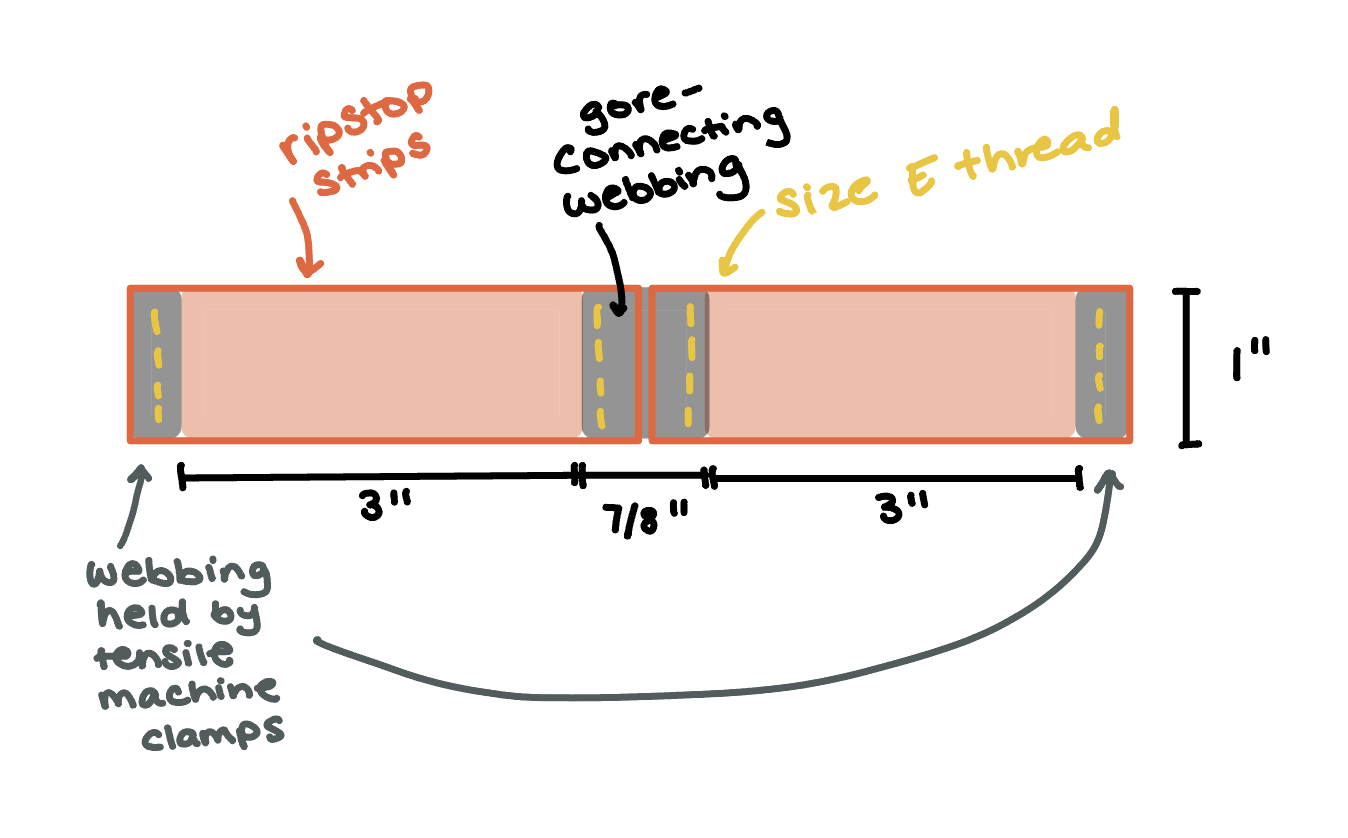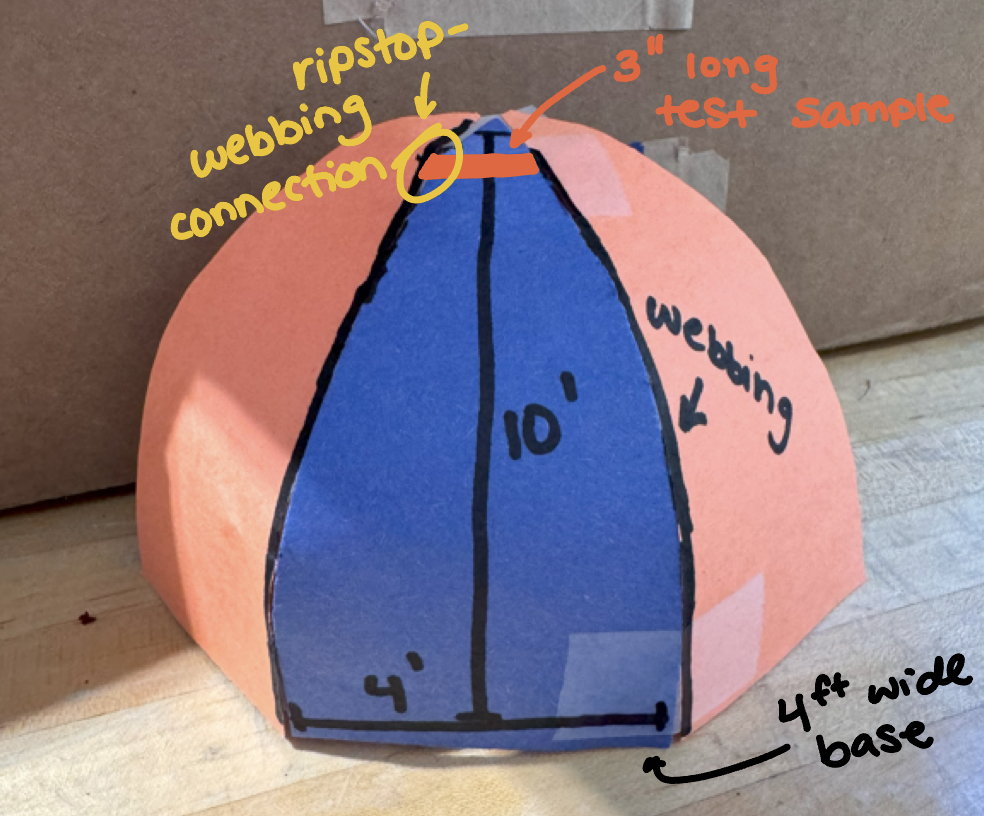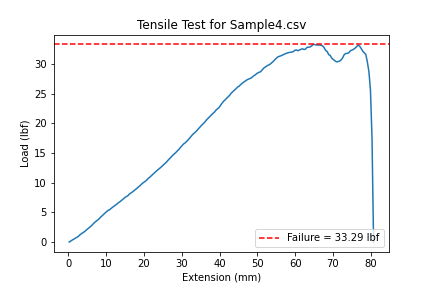akorn48
Member
Hi all,
I’m currently in the process of manufacturing a 16 ft diameter circular parachute for my university’s high-powered rocketry club. Our rocket is 80 lbs, and the snatch force was calculated to be 437 lbf. The parachute is composed of 12 zero-porosity nylon ripstop gores connected by strips of Type 6 nylon webbing via Size E thread. I recently did tensile testing on 1” wide sample connections of ripstop & webbing as shown below in Figure 1, and found the ultimate tensile strength to be about 34 lbf (Figure 3).
I am wondering how to determine what the ultimate tensile strength should be on such a sample in order to survive the load applied to the entire parachute under inflation. If there are 12 gores, it seems reasonable to me that each gore should be able to withstand 437/12 = 36.4 lbf. However, if each gore (4 ft base and height of 10 ft) needs to withstand 36.4 lbf, how much does each inch-wide strip of webbing/ripstop connection need to withstand? Is it simple enough to say there are 120 inches in length of each webbing line, so each inch-wide strip of webbing for each gore needs to withstand 36.4/120 = 0.303 lbf? That seems very small. Additionally, each gore has variable width along its height. How would this come into play when scaling up our small 3” long ripstop test sample, which would be found at the very top of the chute (Figure 2)? This tensile sample likely produces different results than a full 4 ft sample found at the base would.
Any guidance would be very much appreciated. Thank you very much!
Figure 1:

Figure 2:

Figure 3:

I’m currently in the process of manufacturing a 16 ft diameter circular parachute for my university’s high-powered rocketry club. Our rocket is 80 lbs, and the snatch force was calculated to be 437 lbf. The parachute is composed of 12 zero-porosity nylon ripstop gores connected by strips of Type 6 nylon webbing via Size E thread. I recently did tensile testing on 1” wide sample connections of ripstop & webbing as shown below in Figure 1, and found the ultimate tensile strength to be about 34 lbf (Figure 3).
I am wondering how to determine what the ultimate tensile strength should be on such a sample in order to survive the load applied to the entire parachute under inflation. If there are 12 gores, it seems reasonable to me that each gore should be able to withstand 437/12 = 36.4 lbf. However, if each gore (4 ft base and height of 10 ft) needs to withstand 36.4 lbf, how much does each inch-wide strip of webbing/ripstop connection need to withstand? Is it simple enough to say there are 120 inches in length of each webbing line, so each inch-wide strip of webbing for each gore needs to withstand 36.4/120 = 0.303 lbf? That seems very small. Additionally, each gore has variable width along its height. How would this come into play when scaling up our small 3” long ripstop test sample, which would be found at the very top of the chute (Figure 2)? This tensile sample likely produces different results than a full 4 ft sample found at the base would.
Any guidance would be very much appreciated. Thank you very much!
Figure 1:
Figure 2:
Figure 3:
Last edited:





